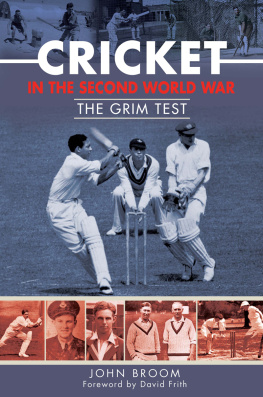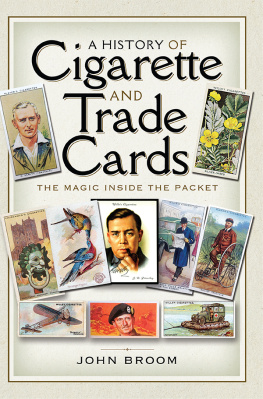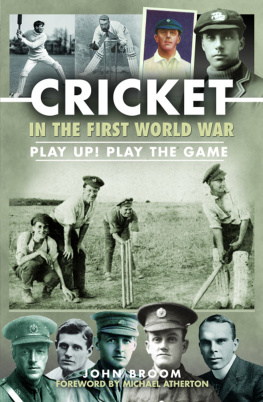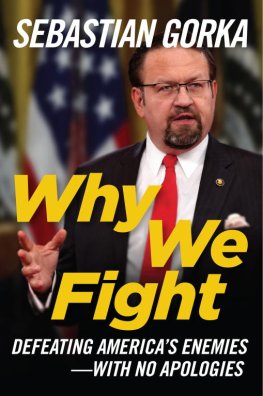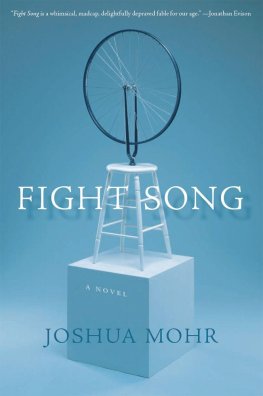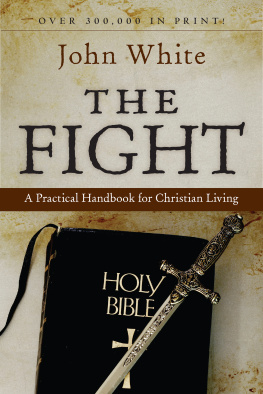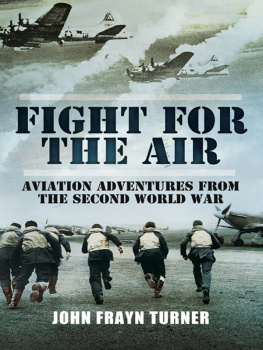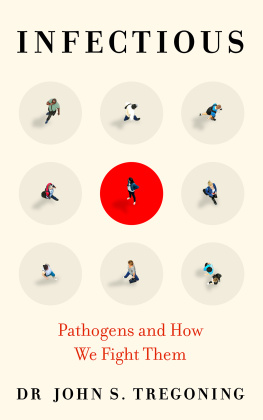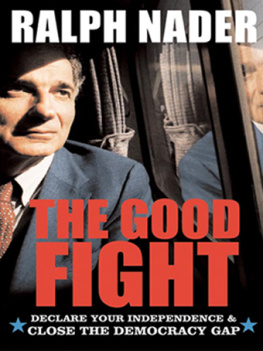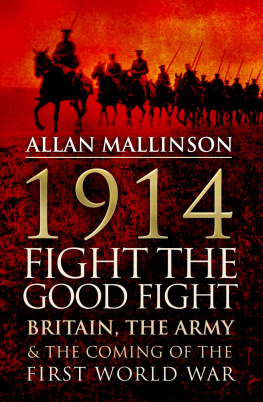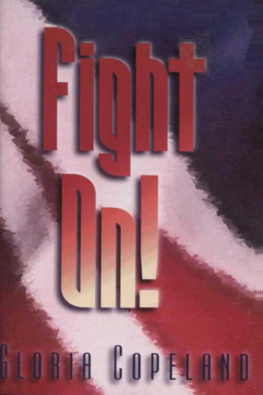The lives of common men are soon forgot,
Their deeds lie buried in obscurity.
Twas musing thus I seized the slumbrous pen
Which sprang to life, and so this book was born.
John W.N. Broom, Sunshine and Shadow, 1938
First published in Great Britain in 2016 by
Pen & Sword Military
an imprint of
Pen & Sword Books Ltd
47 Church Street
Barnsley
South Yorkshire
S70 2AS
Copyright John Broom 2016
ISBN: 978 1 47386 239 5
PDF ISBN: 978 1 47386 242 5
EPUB ISBN: 978 1 47386 241 8
PRC ISBN: 978 1 47386 240 1
The right of John Broom to be identified as the Author of this Work has been asserted by him in accordance with the Copyright, Designs and Patents Act 1988.
A CIP catalogue record for this book is available from the British Library
All rights reserved. No part of this book may be reproduced or transmitted in any form or by any means, electronic or mechanical including photocopying, recording or by any information storage and retrieval system, without permission from the Publisher in writing.
Typeset in Ehrhardt by
Mac Style Ltd, Bridlington, East Yorkshire
Printed and bound in the UK by CPI Group (UK) Ltd,
Croydon, CRO 4YY
Pen & Sword Books Ltd incorporates the imprints of Pen & Sword Archaeology, Atlas, Aviation, Battleground, Discovery, Family History, History, Maritime, Military, Naval, Politics, Railways, Select, Transport, True Crime, Fiction, Frontline Books, Leo Cooper, Praetorian Press, Seaforth Publishing and Wharncliffe.
For a complete list of Pen & Sword titles please contact
PEN & SWORD BOOKS LIMITED
47 Church Street, Barnsley, South Yorkshire, S70 2AS, England
E-mail:
Website: www.pen-and-sword.co.uk
Contents
Acknowledgments
T he families of many of the people featured in this book have astounded me with the generosity of their time, enthusiasm and support. I wish to thank Louise Reynolds, for permission to quote from her beautiful books on her father, Eric Cordingly, and for her advice and encouragement; Irene Beckett, for entrusting me valuable documents, and for permission to quote from the papers of her father, James Driscoll; James Benn, for allowing me access to his own research on his great-uncle, Michael Benn, and for his hospitality and kindness at Stansgate House; to my cousin Helen Barrull, for her dedication in recording the story of her part of the family, including that of her grandfather, Tommy Tomkins; David Mash, for his account of the life of his father, Edgar Mash, and his close reading of that chapter; Margaret Bradley, for her enthusiasm in sharing the papers of her father, Dick Stokes; and Helen Wheeler, for sharing her precious papers of her uncle, John Short.
David Blake, archivist at the Royal Army Chaplains Department at Amport House, is an inexhaustible mine of information on his subject. Michael Snape is a constant source of erudition, support and positivity. Elizabeth and John Sherrill kindly gave permission to quote from The Hiding Place. Ken Hewitt provided valuable insights into the 1st Leicestershire Battalions actions in Malaya in 194142. Anne Wickes at the Second World War Experience Centre in Yorkshire pointed me in the direction of the story of John Bishop and provided space at that wonderful archive to study his papers. Dr Mark Bailey is a dear old friend from undergraduate days who cast his scholarly eye over the script. Linne Matthews has made my transition from enthusiastic amateur to published writer a less rocky path.
Changi Museum kindly granted permission to use the image of the Changi Cross, featured on the dust jacket. Peter Stubbs gave permission to quote from his book on Stanley Warren and the Changi Murals; Jerome Lim gave permission to reproduce his photographs of the Changi Murals from his website http://jeromelimphotography.viewbook.com/. Thanks also to William Warren, for comments regarding his father, Stanley; to Nigel Perrin, for permission to quote from his Special Operations Executive website page on Hugh Dormer; and to the University of Hawaii Press for permission to quote from the work of Israel Yost.
Above all, it has been an immense privilege and delight to meet in person, speak with on the telephone, and exchange letters and emails with many of the remarkable people in this book. I wish to thank John Bishop, Audrey Forster, Bill Frankland, Ruth Hargreaves, Celia Hewerdine and Ken Tout for sharing their memories with me and for providing a very personal link to the history I study with such interest.
Any copyright omissions or inaccuracies are entirely down to the author, and I would welcome the opportunity to correct them in future printings.
Finally, I am thankful to my wife, Dawn, for her forbearance of the fact that my head has been lost in the 1940s for a significant part of the past year!
Introduction
T he Second World War has probably generated a larger number of books than any other epoch in history. However, it is only since the 1980s that the testimonies of ordinary people who lived in extraordinary times have emerged from the shadows. Due either to their own modesty or a desire not to dwell too much on terrible events they had experienced, the voice of the ordinary person living through extraordinary times was neglected. To some extent there was a retrospectively lamentable oversight on the part of the succeeding generations to ask very many questions at all of the men and women who lived through the 1940s.
Today, anyone with any direct memory of the war is a septuagenarian, octogenarian, nonagenarian or even a centenarian. Each year, families are uncovering and making public sets of letters, diaries and reminiscences from the period. These provide valuable and fresh insights into many aspects of the war, including the cultural angle, but the longer these are left, the less direct and immediate is the link with the person who wrote them.
Furthermore, in the testimonies of many people who did experience the war, religion (which for most people in Britain and Europe meant some form of Christianity), although a central part of their experience, has become in too many cases an incidental footnote amongst the bombs, tanks, prison camps, ships, aircraft, rationing, evacuation and general culture of the period. It is individual people who experienced this history; those people had beliefs beliefs informed by their family background, education, social circle and, for many of the wartime generation, their exposure to Christianity at Sunday schools, in the home and in the wider social discourse of British life. As Professor Michael Snape, a leading academic in the field of war and religion, has noted, The lack of detailed research into popular religious life during the war years remains a major lacuna in the extensive historiography of British society in the First and Second World Wars.
This book therefore seeks to highlight, through the stories of twenty people sixteen of them British, two from Germany and one each from Holland and the US of differing denominations, the central part Christianity played in their own experiences of the Second World War. They provide just a tiny snapshot of the millions of people who adhered to some form of Christianity worldwide in the 1940s.
However, it is not just in the testimonies of such people that evidence of the importance of Christianity during the Second World War can be found. Winston Churchill, in his Finest Hour speech of June 1940, referred to the Battle of Britain as the battle for Christian civilisation. King George VI called a National Day of Prayer for 26 May 1940, as the British Army stood poised on the brink of disaster at Dunkirk. Thousands responded to this call by going to pray at their local church. Crowds snaked round Westminster Abbey, queuing up to offer their prayer for national deliverance. This event was followed by a storm over Dunkirk, grounding the Luftwaffe, and a calm over the Channel, enabling the ships, both big and small, to launch a rescue operation that saw more than 330,000 men brought back to Britain.


